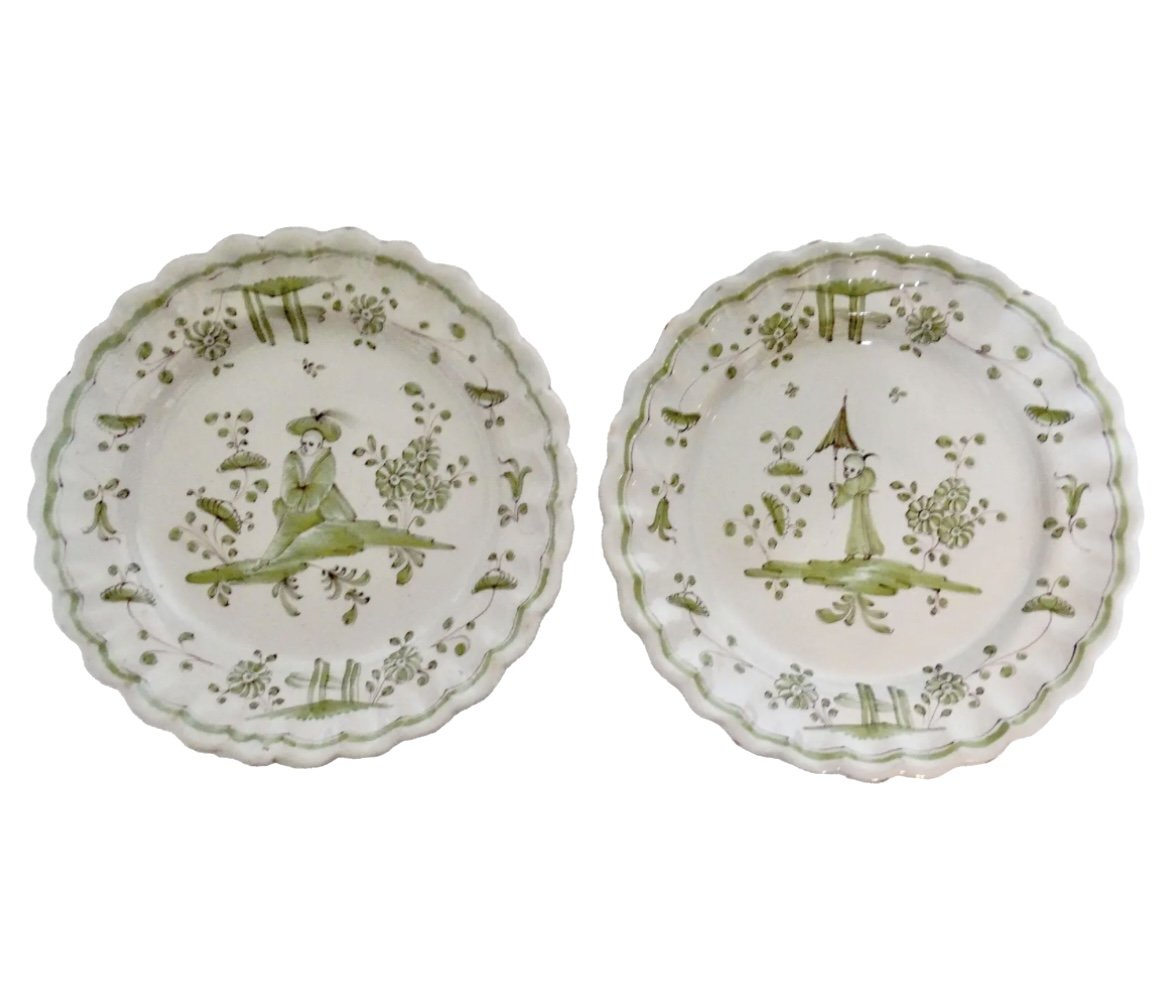 Image 1 of 14
Image 1 of 14

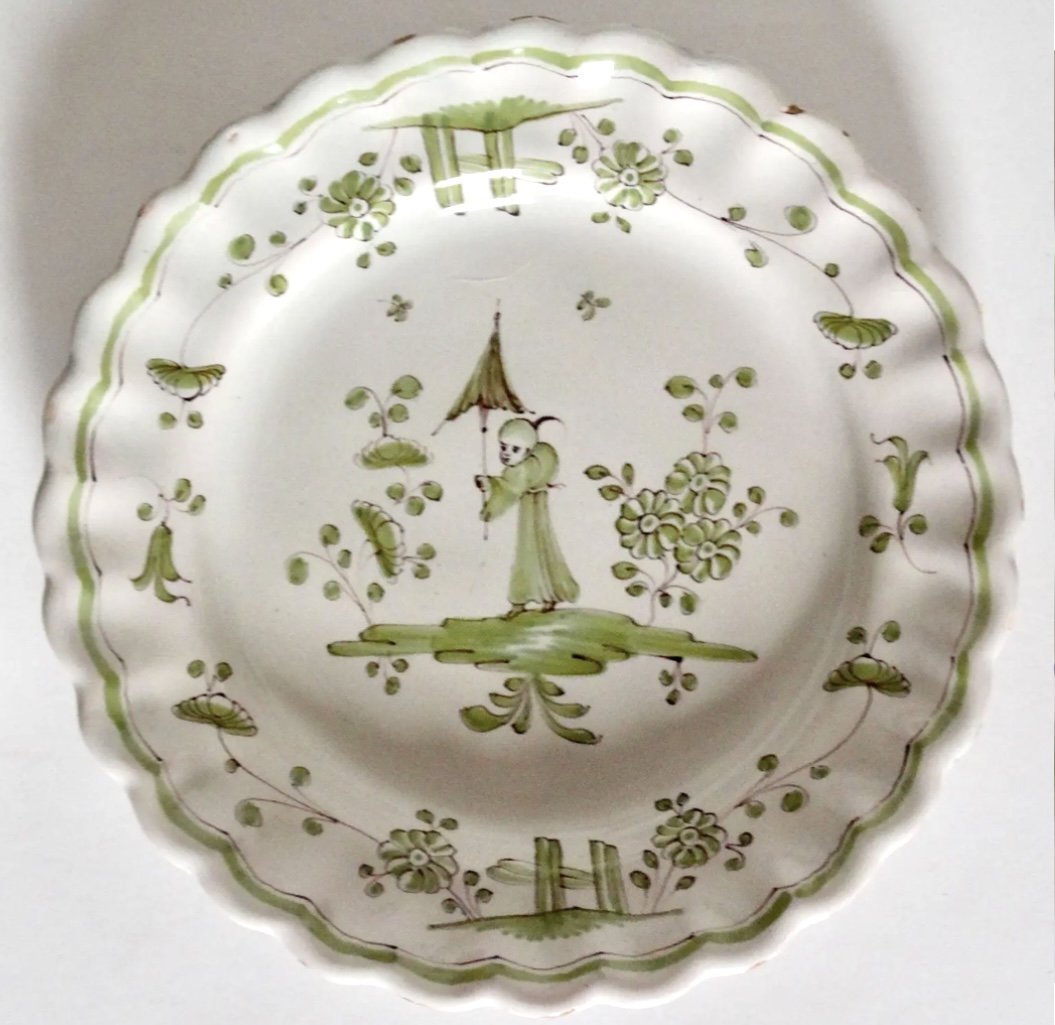 Image 2 of 14
Image 2 of 14

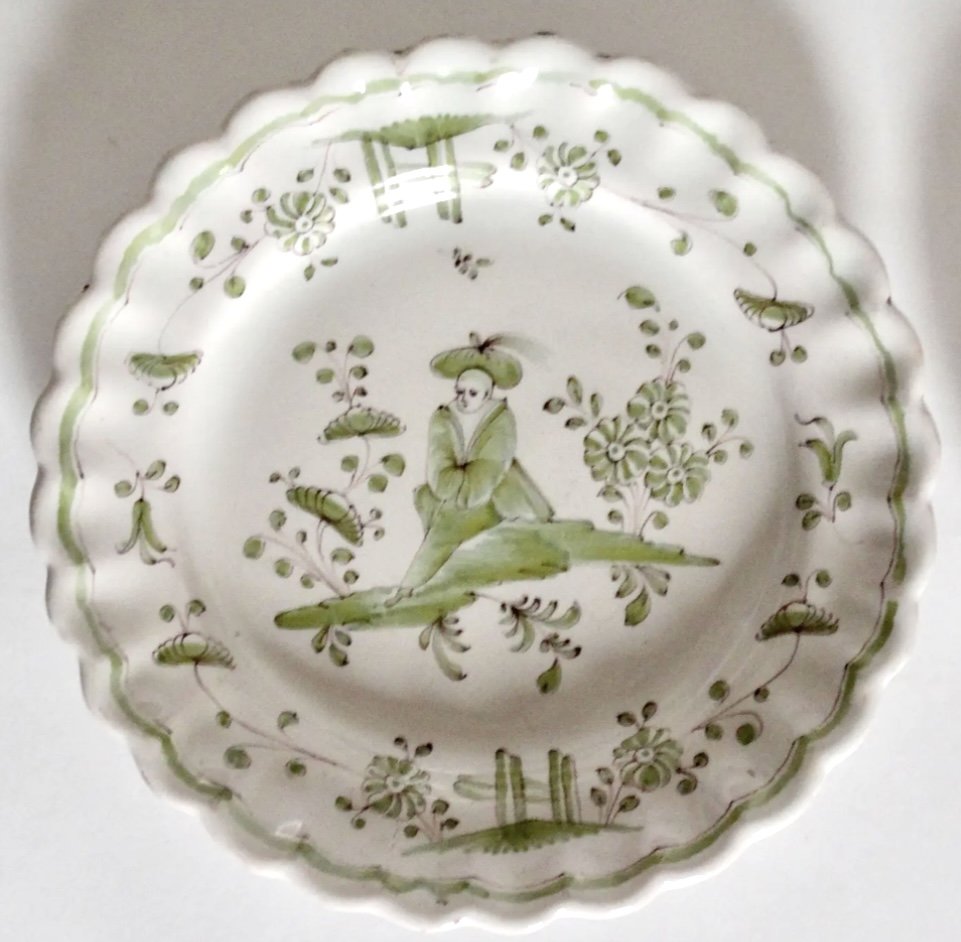 Image 3 of 14
Image 3 of 14

 Image 4 of 14
Image 4 of 14

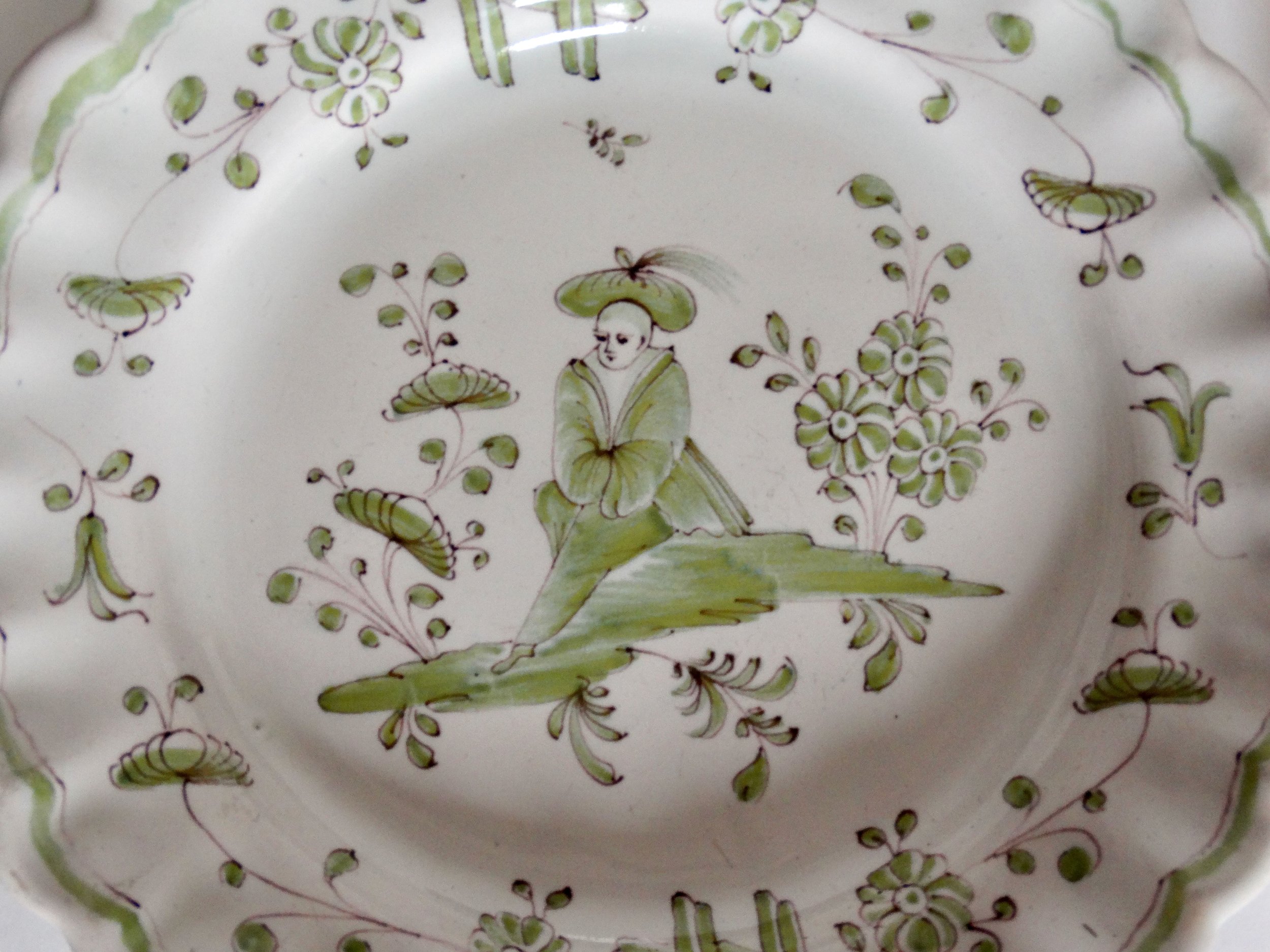 Image 5 of 14
Image 5 of 14

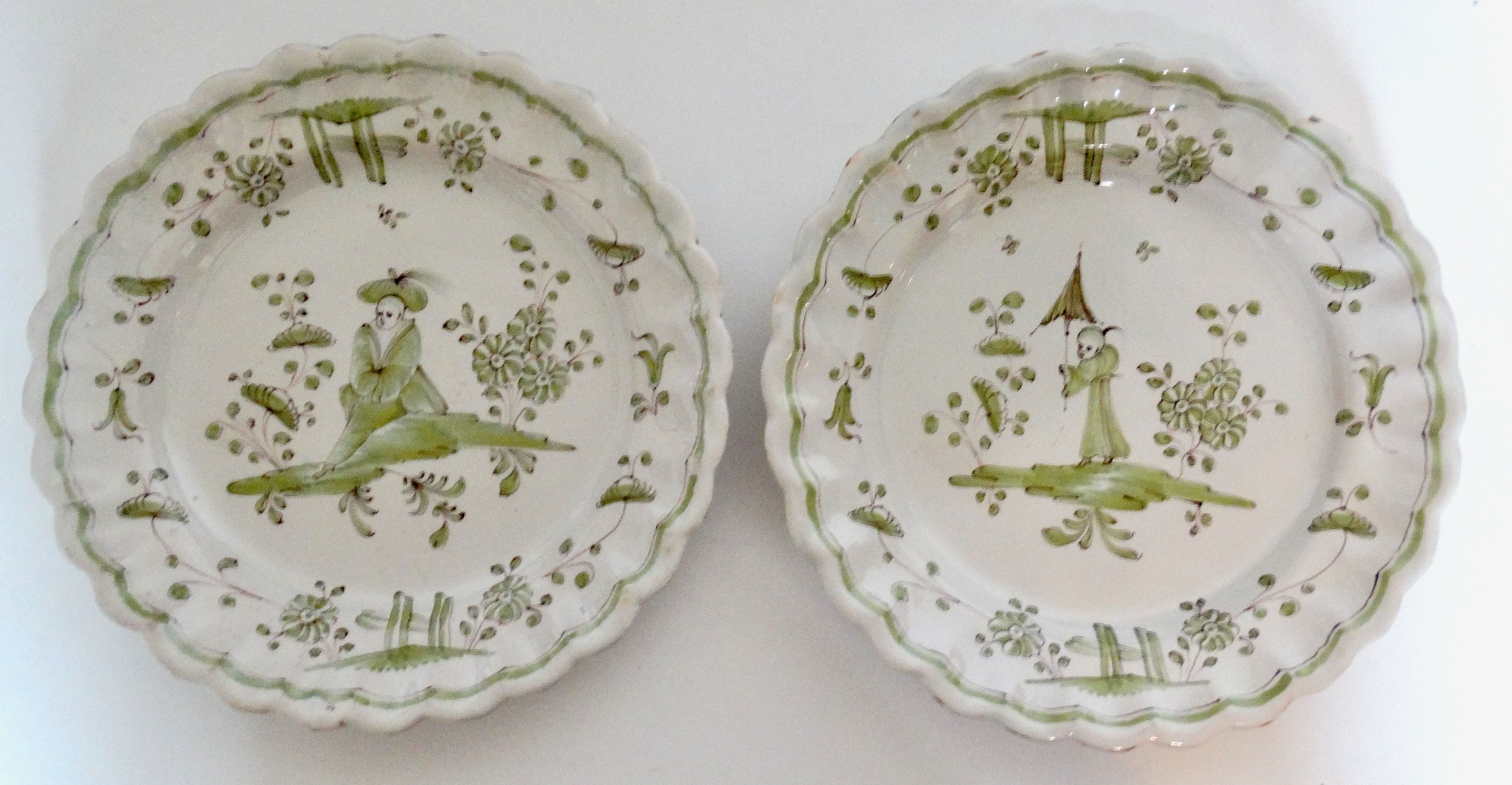 Image 6 of 14
Image 6 of 14

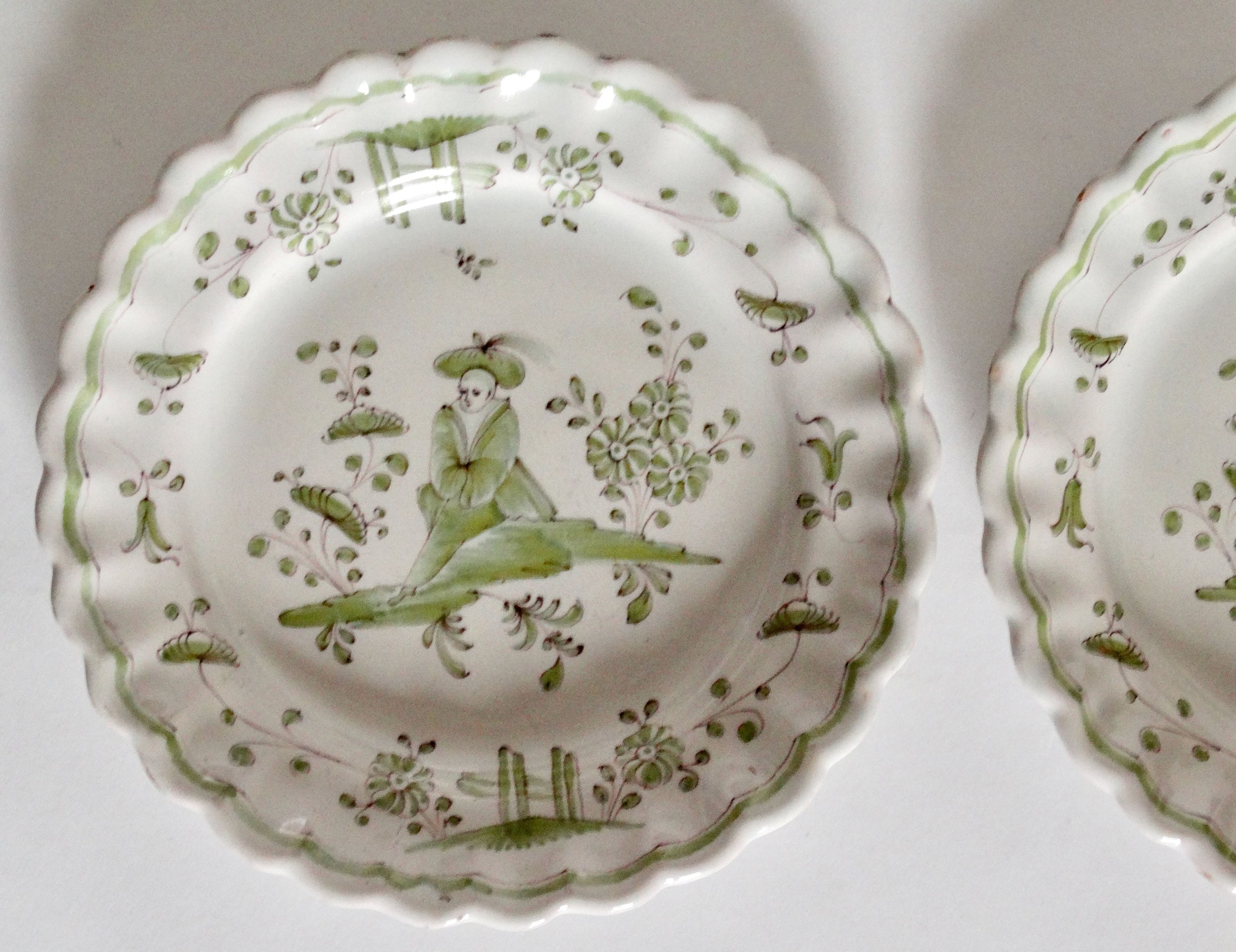 Image 7 of 14
Image 7 of 14

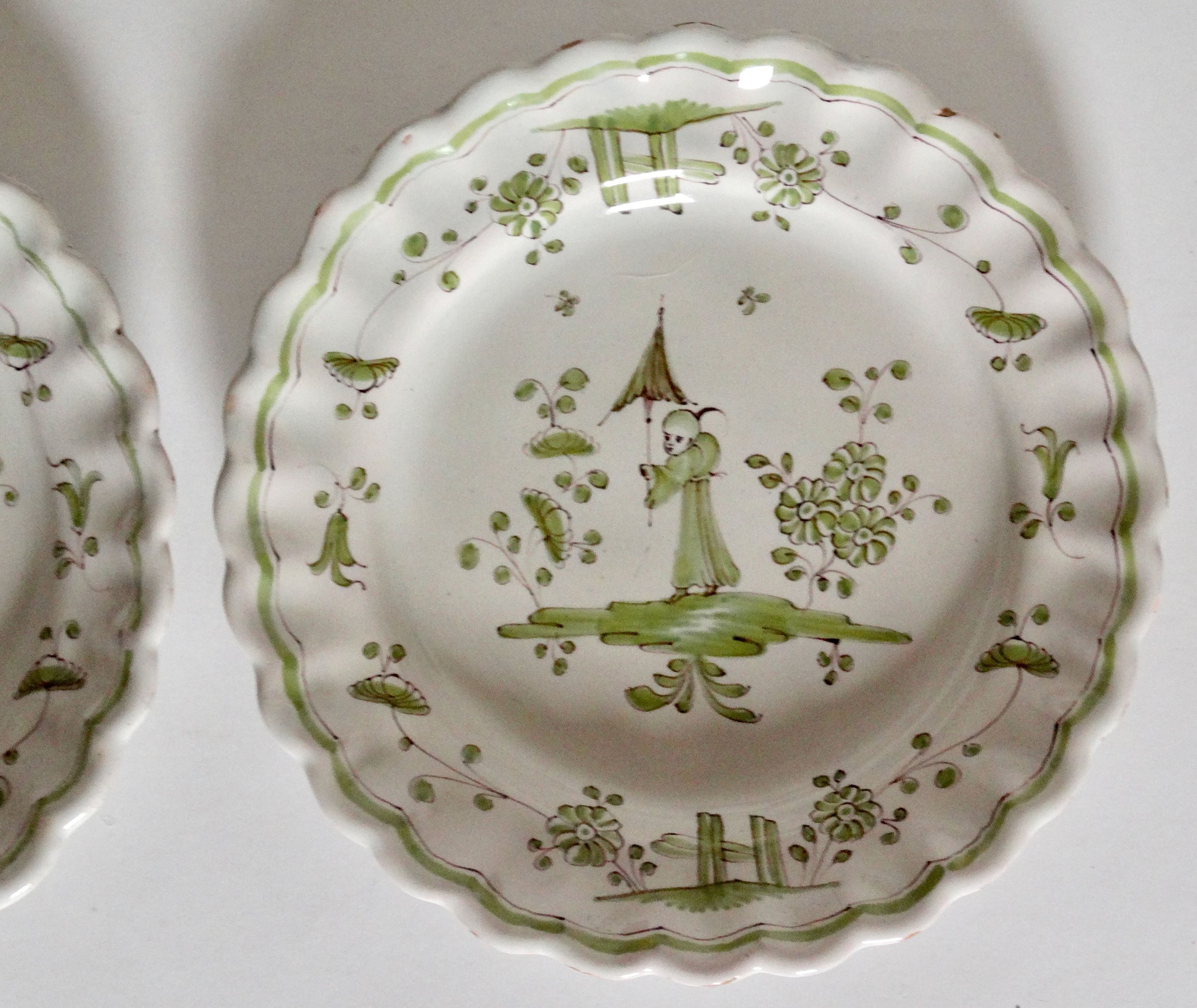 Image 8 of 14
Image 8 of 14

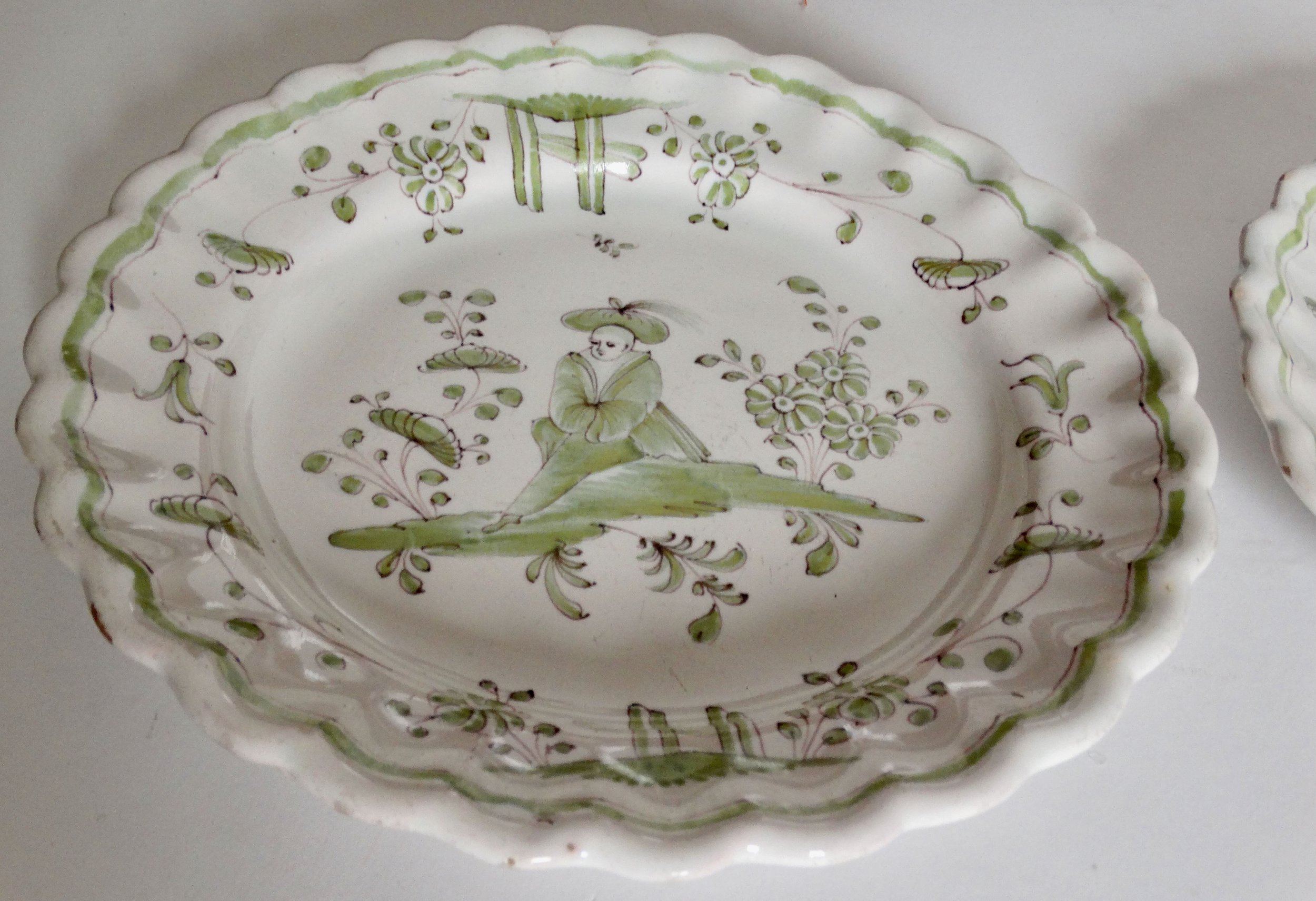 Image 9 of 14
Image 9 of 14

 Image 10 of 14
Image 10 of 14

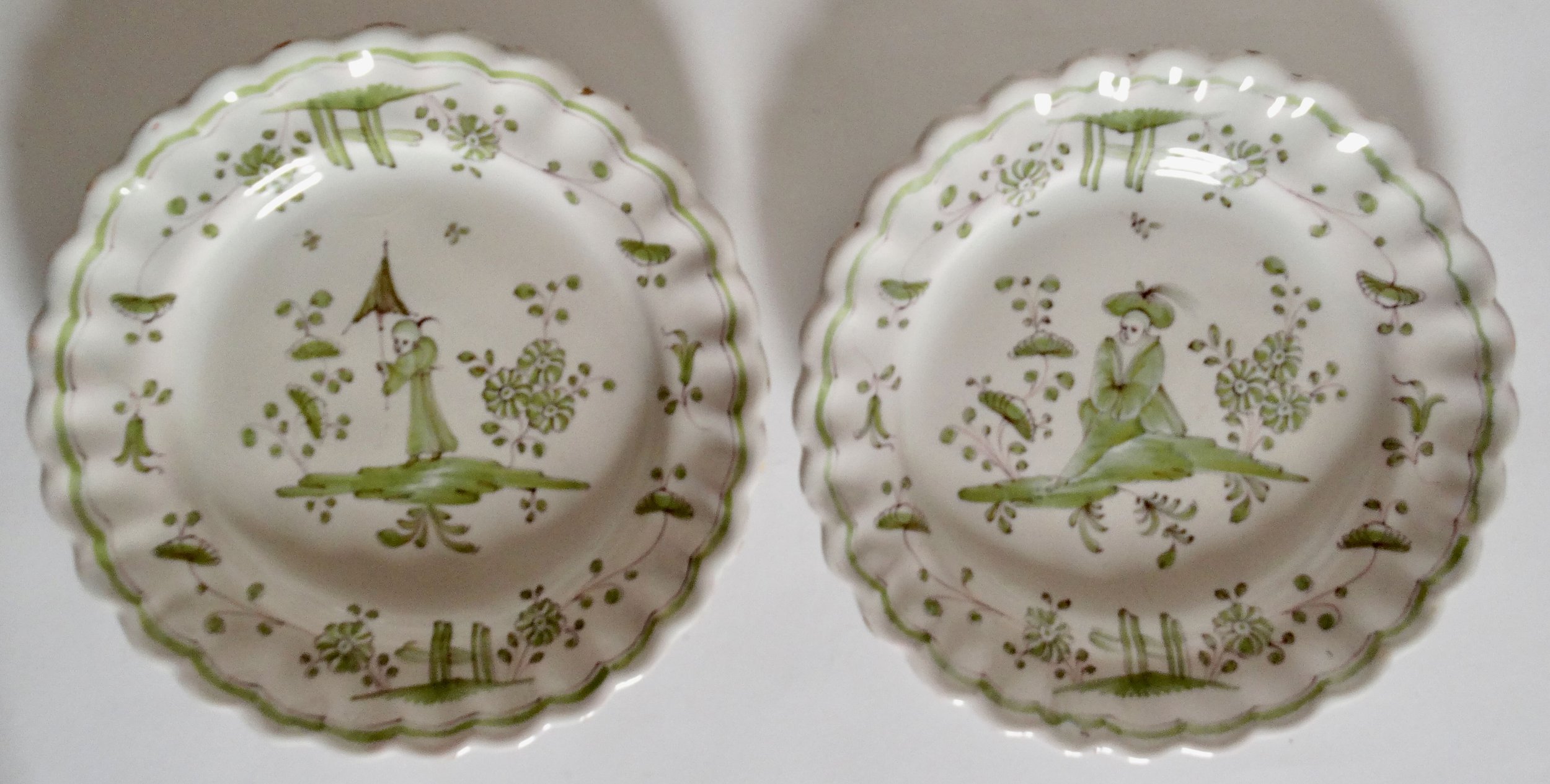 Image 11 of 14
Image 11 of 14

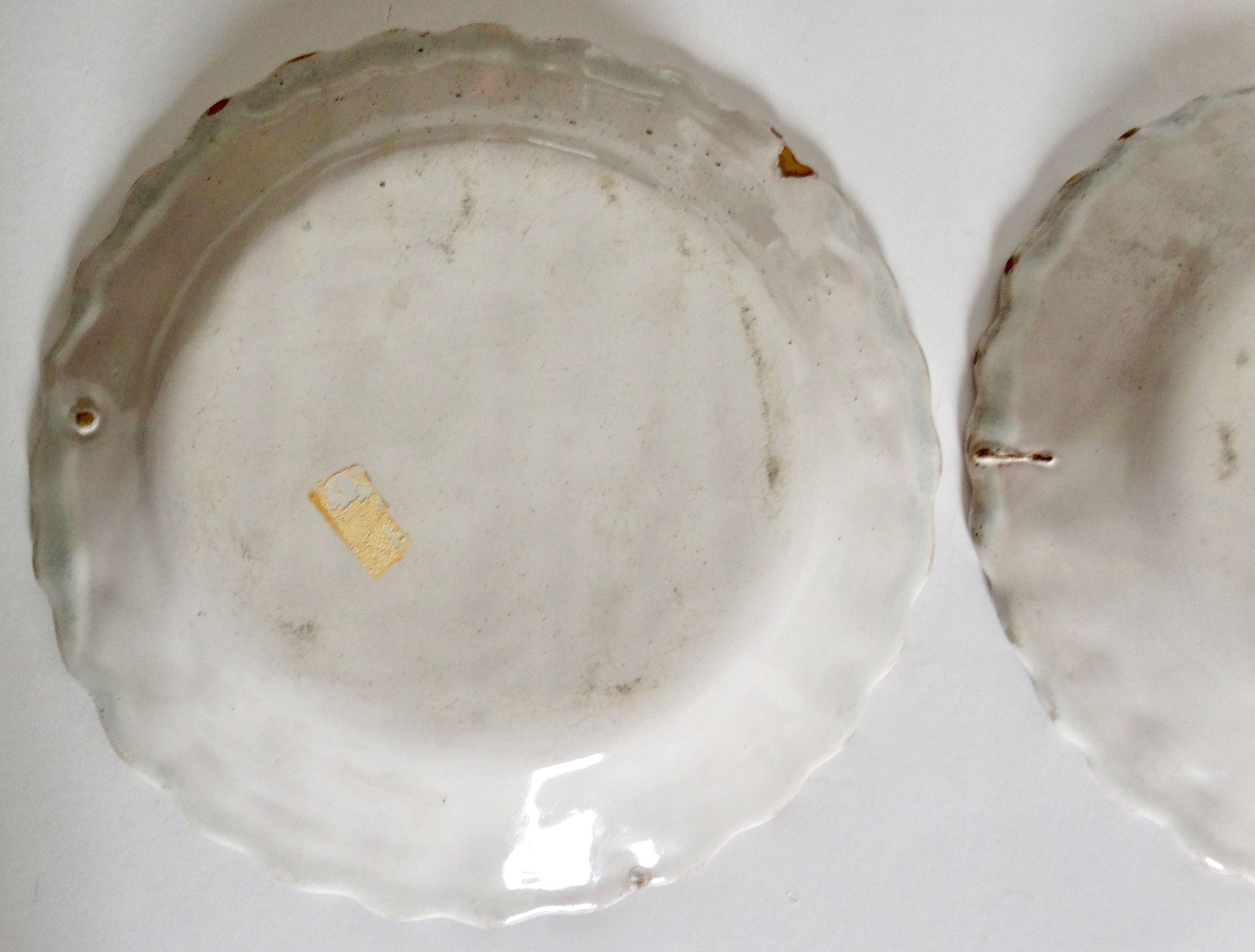 Image 12 of 14
Image 12 of 14

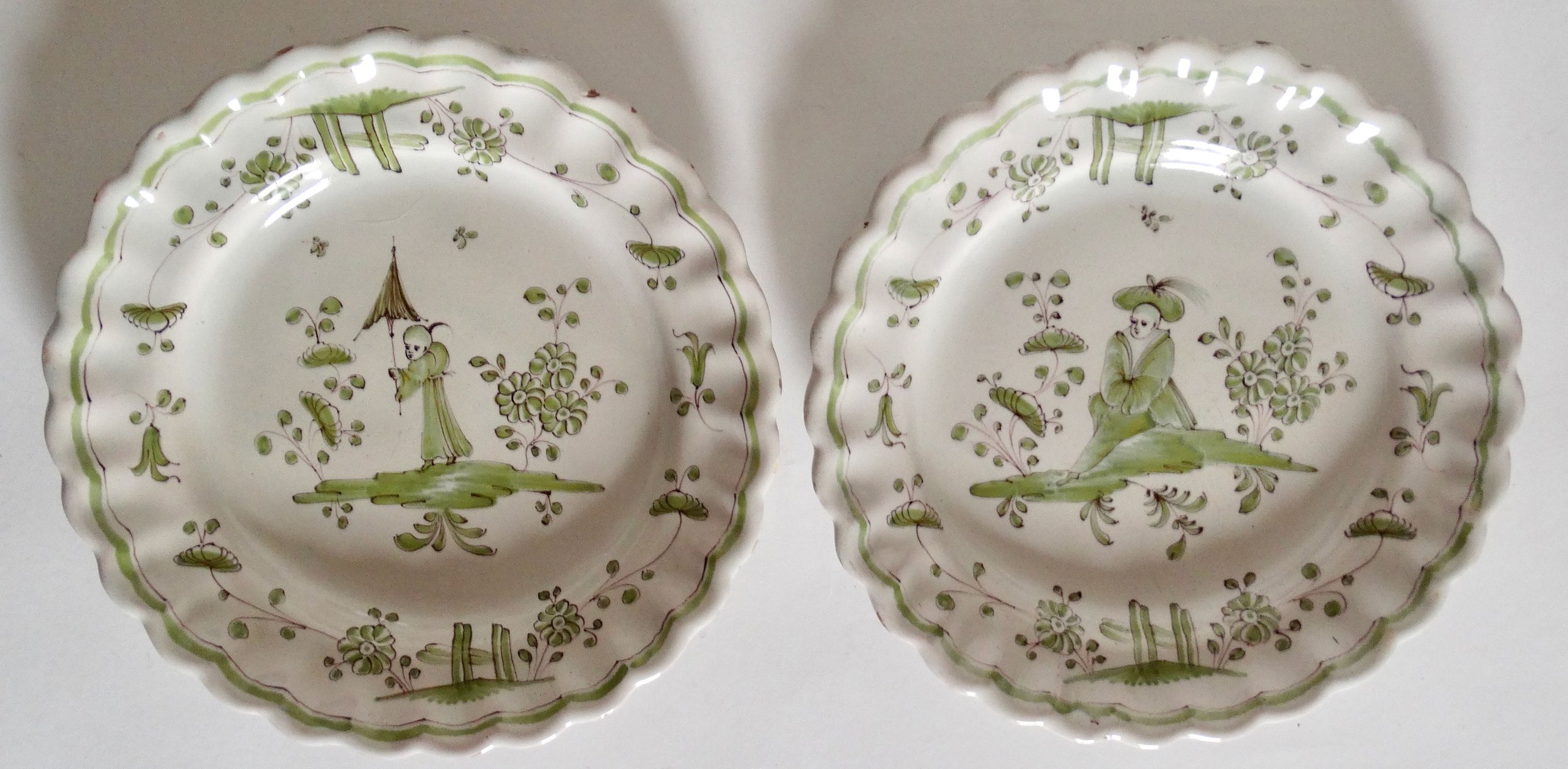 Image 13 of 14
Image 13 of 14

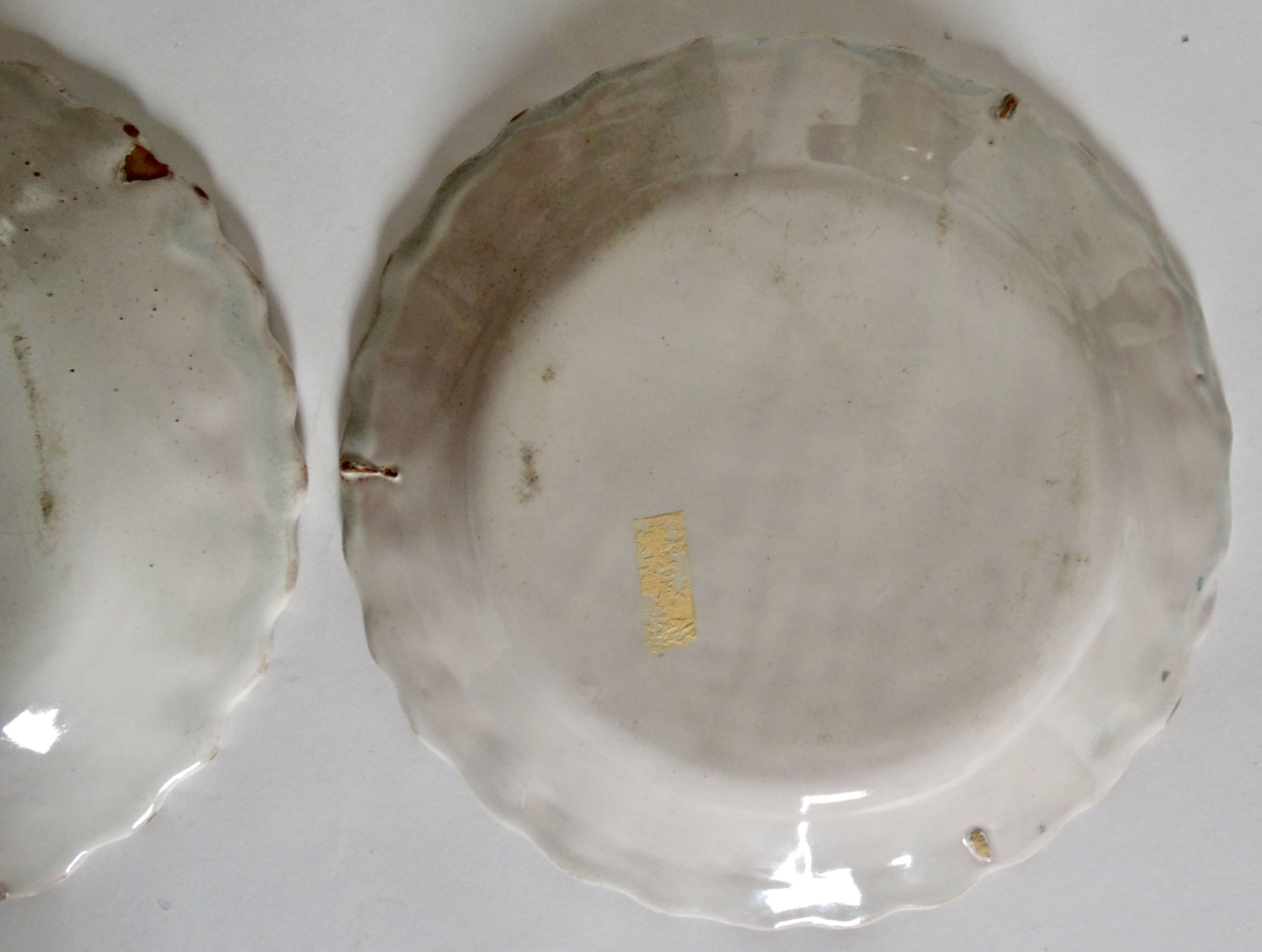 Image 14 of 14
Image 14 of 14















19th-Century French Moustiers Chinoiserie Plates, a Pair
Pair of late 18th-Century French faience plates of lobed shape, hand painted in lovely spring green color. Light purple flourishes with a floral and foliate surround on a cream ground. complete these lovely collectible plates. They each depict a Chinoiserie design stylized grotesque figure, one with a turban and the other with a parasol, both in a field or garden. A fine example of a pair of early Moustiers plates.
Dimensions: 9.5” Diameter x 1” Width
Condition is very good, light wear consistent with age
The art of ceramics has considerably evolved in Moustiers since the Middle Ages. At the time, only objects in glazed clay were produced, in the natural colours of green and brown. The art flourished thanks to Pierre Clérissy, who was initiated by an Italian monk visiting the Monastery of the Communauté de Lérins. He came with the secret of white enamel (tinned ceramics) in 1668. Not long after, Louis XIV had ordered all the gold and silver tableware to be melted to restore the royal treasure and to go to war. It is in this moment that Moustiers’ ceramics will acquire high notoriety all over European courts.
Pair of late 18th-Century French faience plates of lobed shape, hand painted in lovely spring green color. Light purple flourishes with a floral and foliate surround on a cream ground. complete these lovely collectible plates. They each depict a Chinoiserie design stylized grotesque figure, one with a turban and the other with a parasol, both in a field or garden. A fine example of a pair of early Moustiers plates.
Dimensions: 9.5” Diameter x 1” Width
Condition is very good, light wear consistent with age
The art of ceramics has considerably evolved in Moustiers since the Middle Ages. At the time, only objects in glazed clay were produced, in the natural colours of green and brown. The art flourished thanks to Pierre Clérissy, who was initiated by an Italian monk visiting the Monastery of the Communauté de Lérins. He came with the secret of white enamel (tinned ceramics) in 1668. Not long after, Louis XIV had ordered all the gold and silver tableware to be melted to restore the royal treasure and to go to war. It is in this moment that Moustiers’ ceramics will acquire high notoriety all over European courts.
